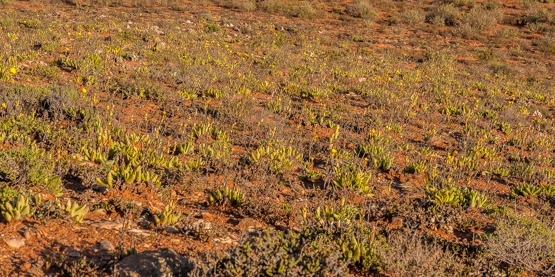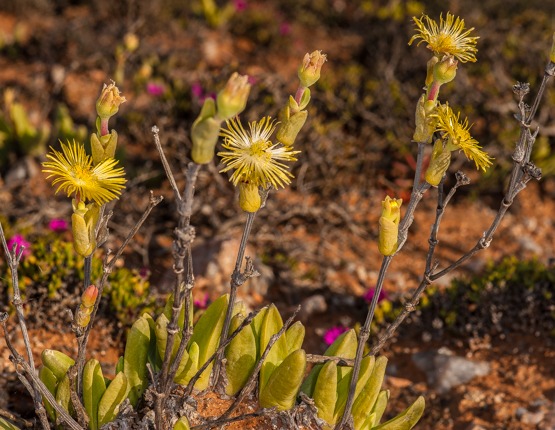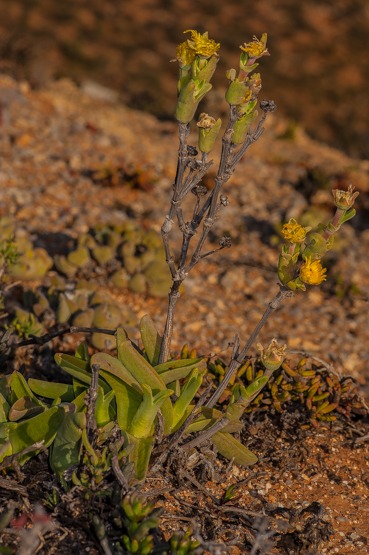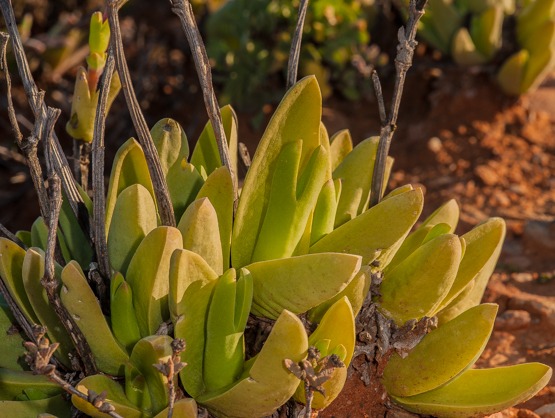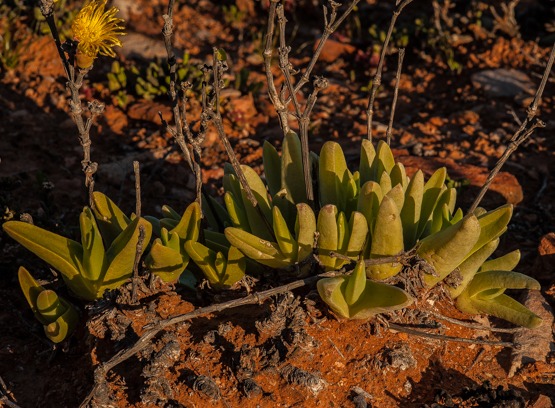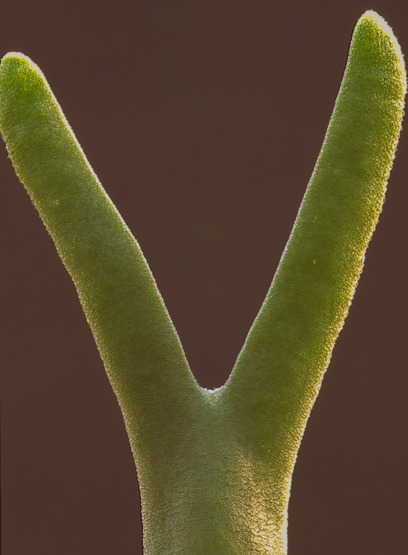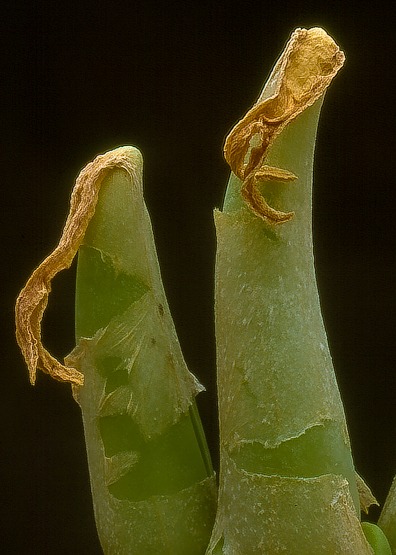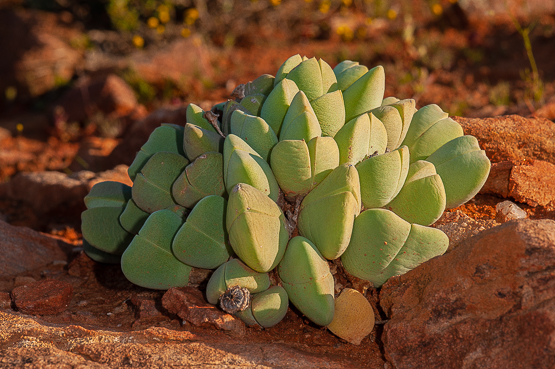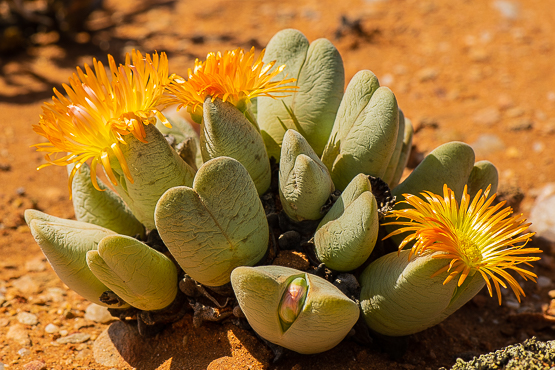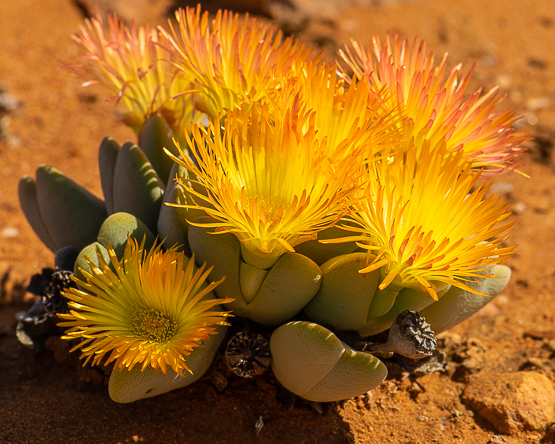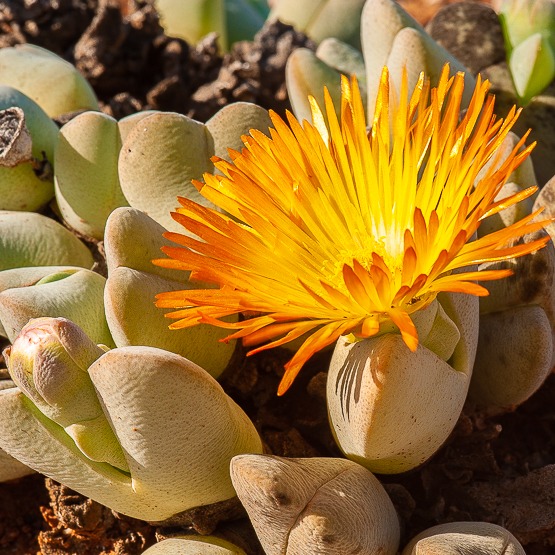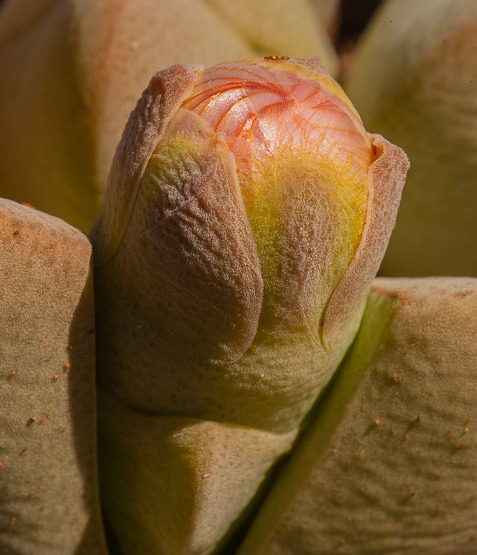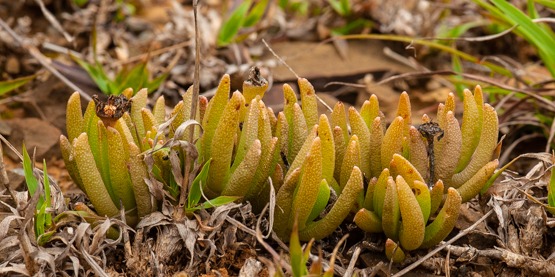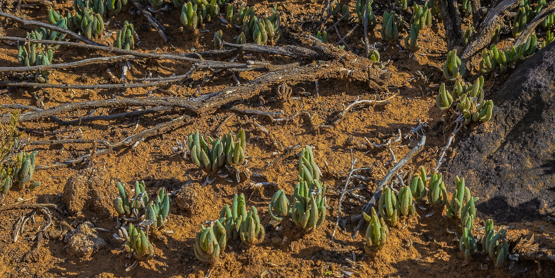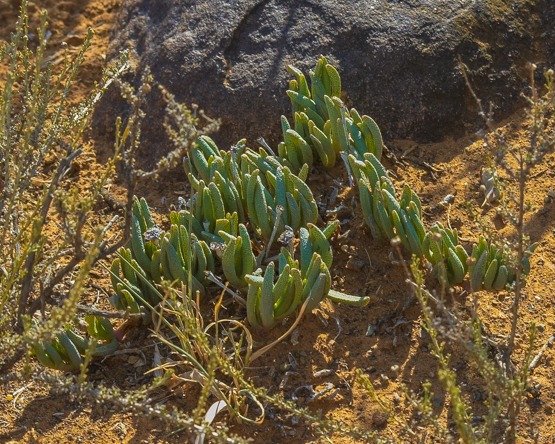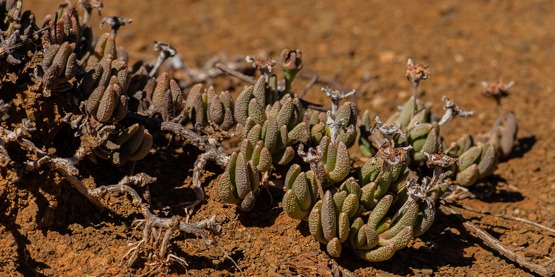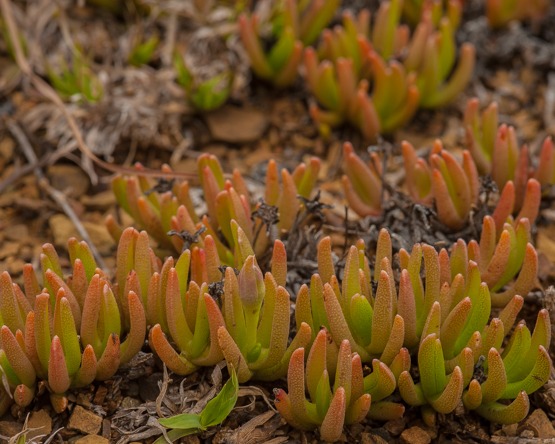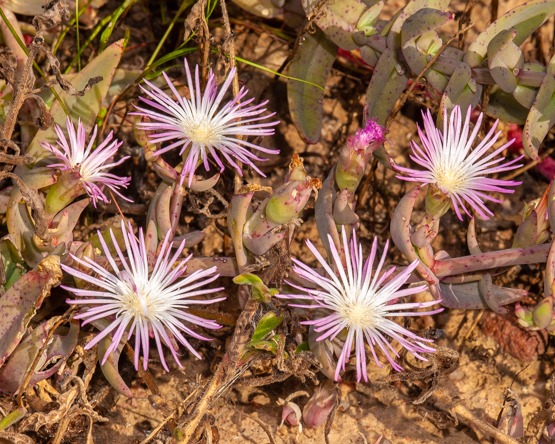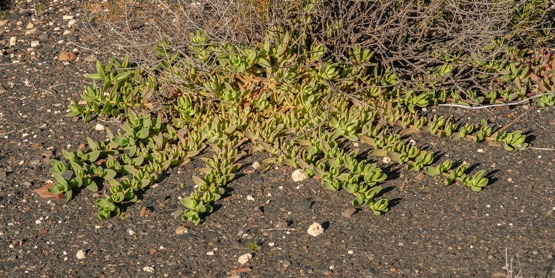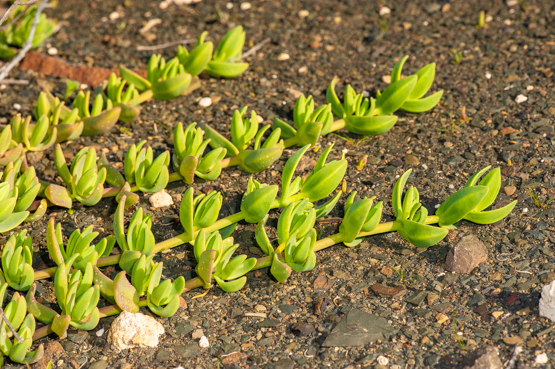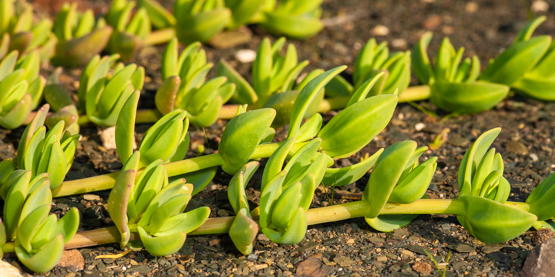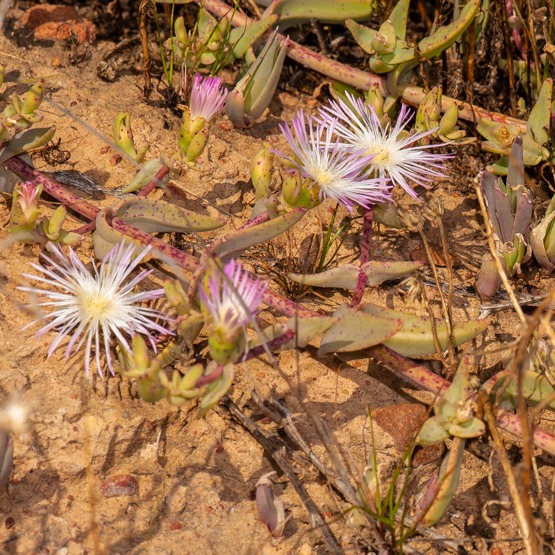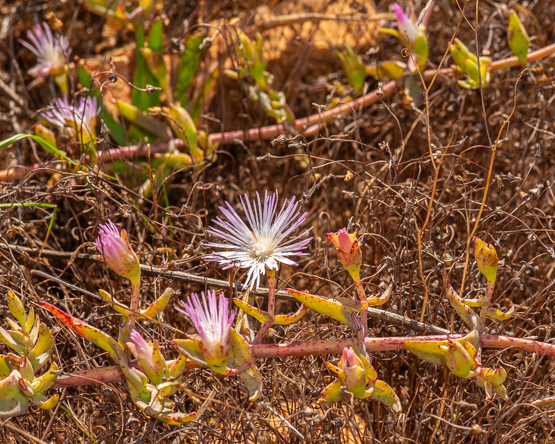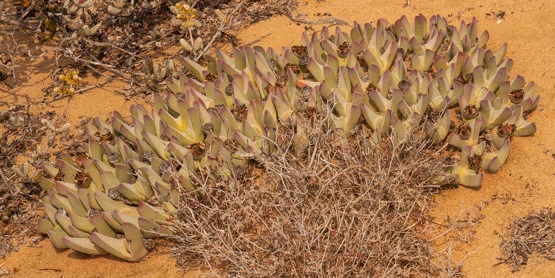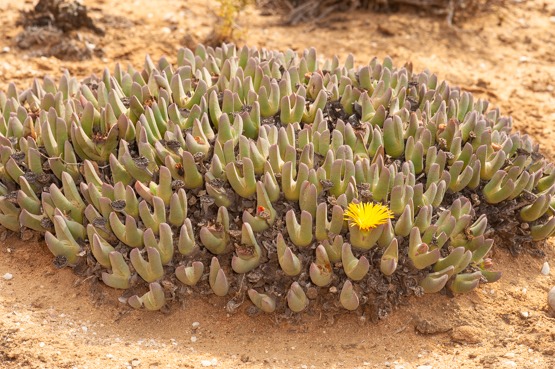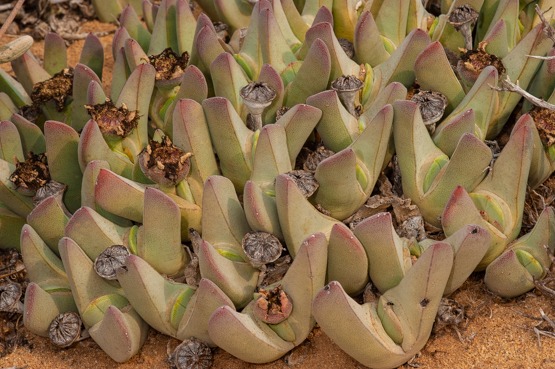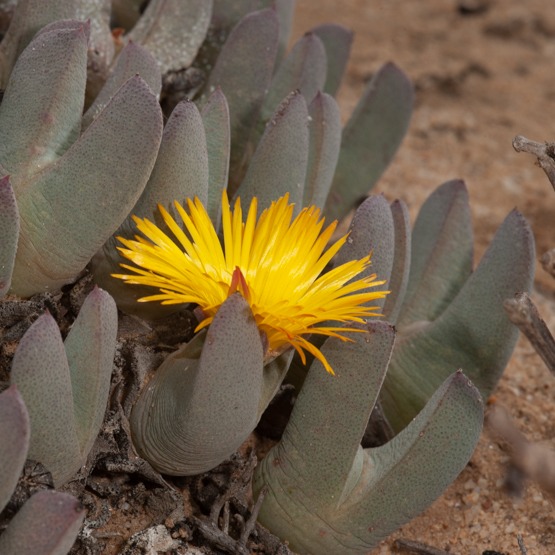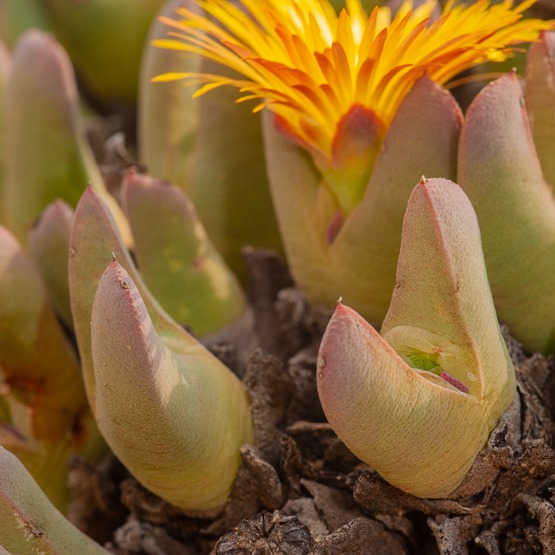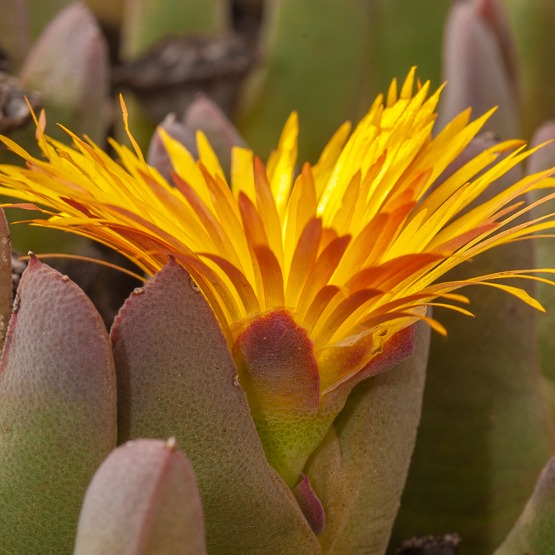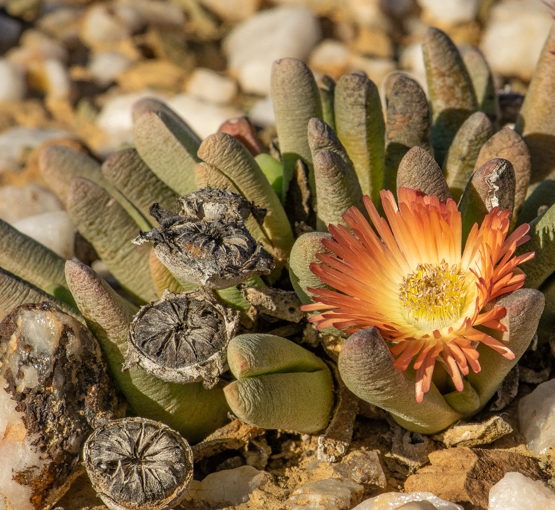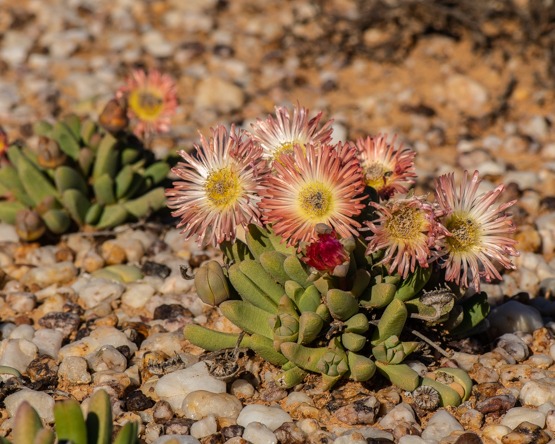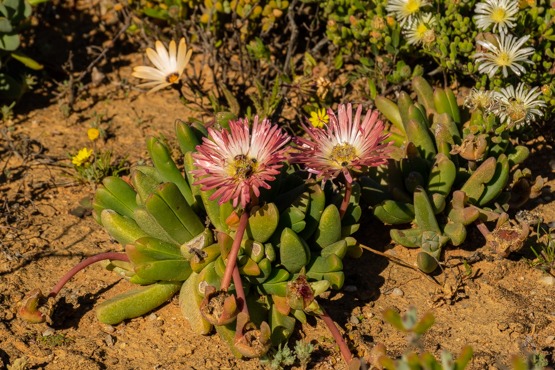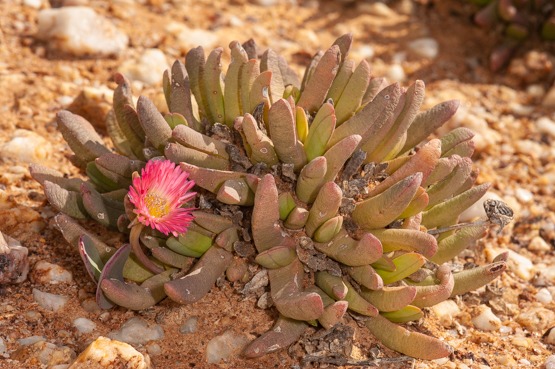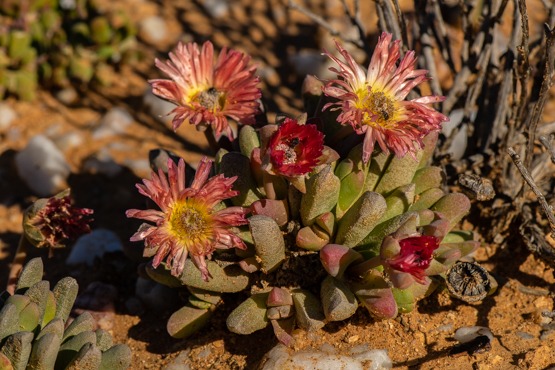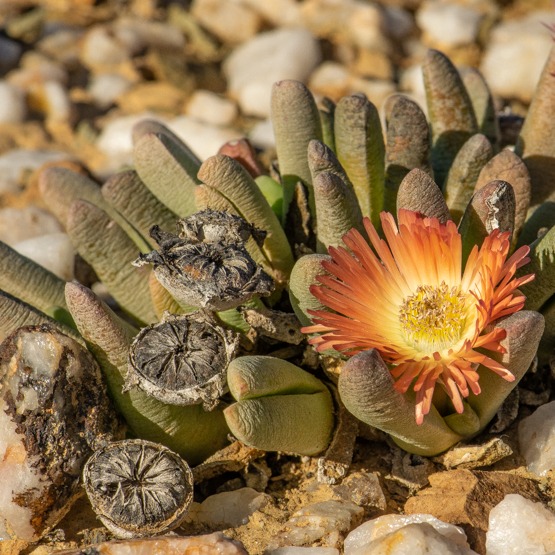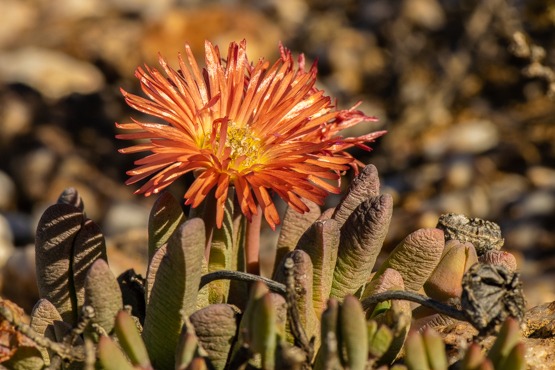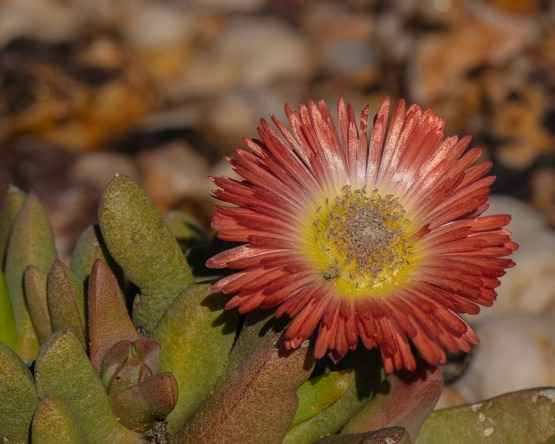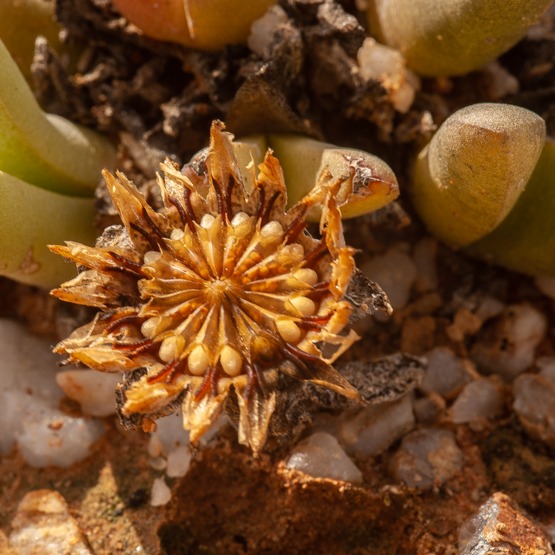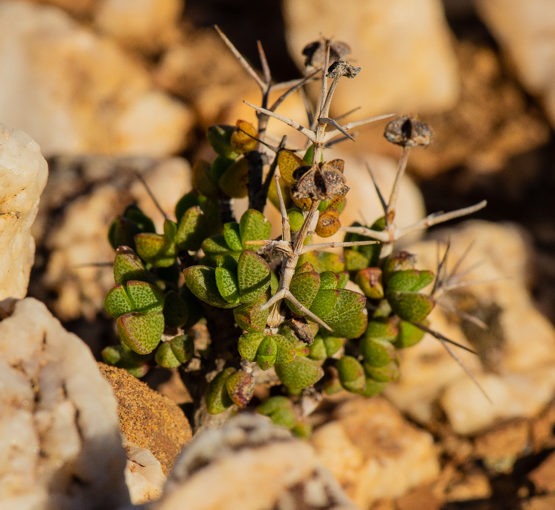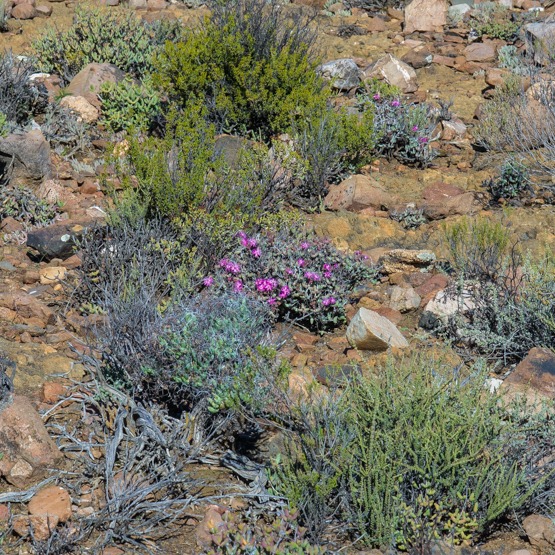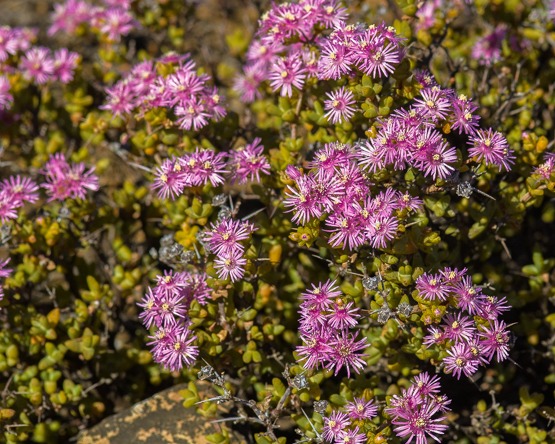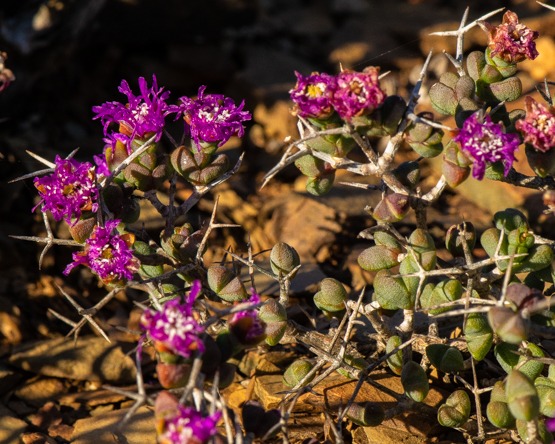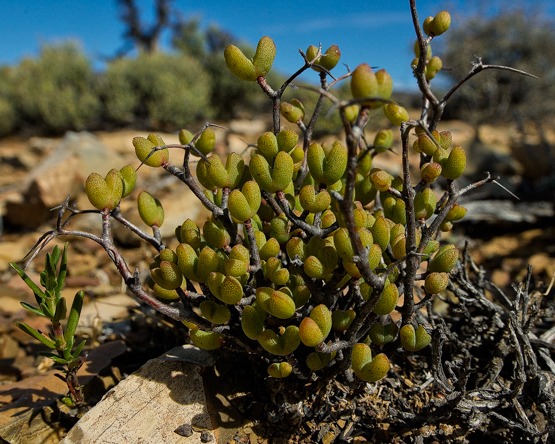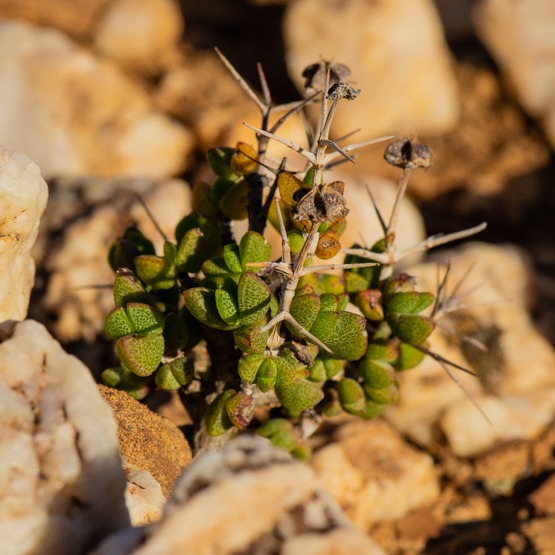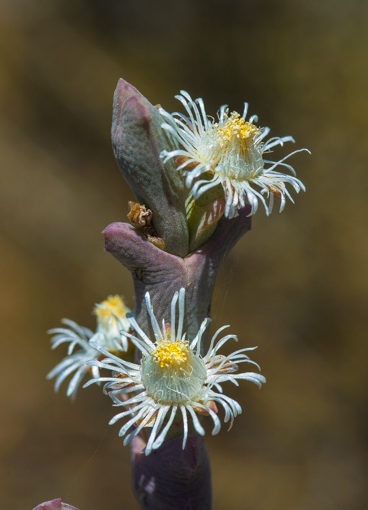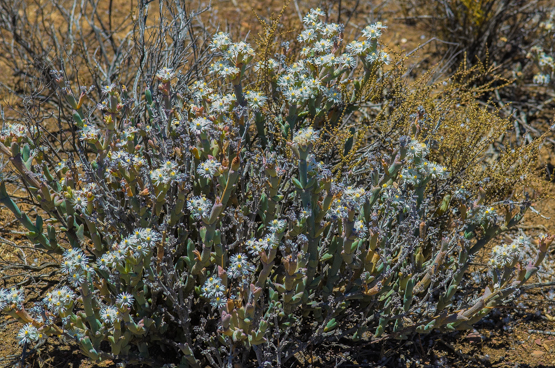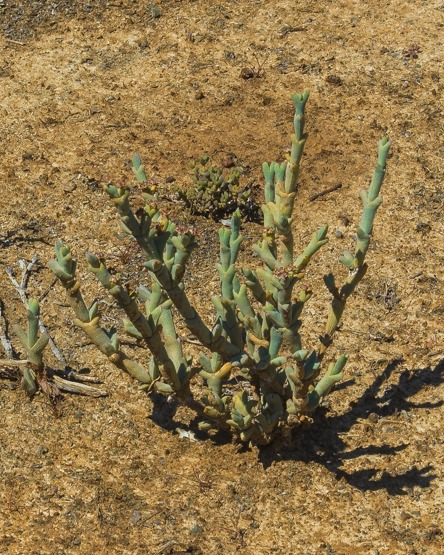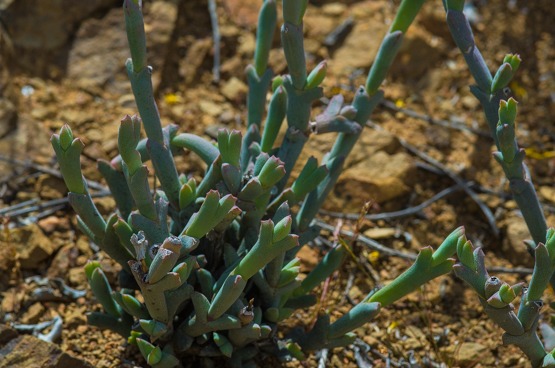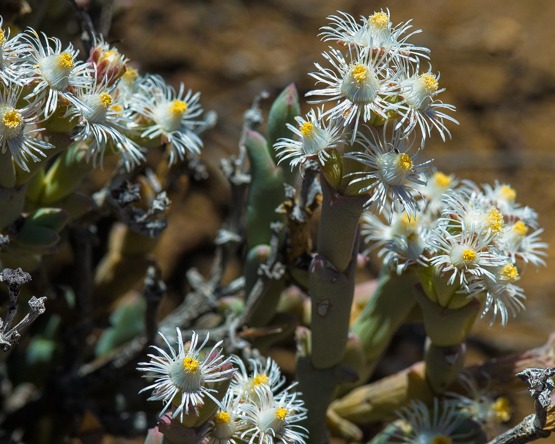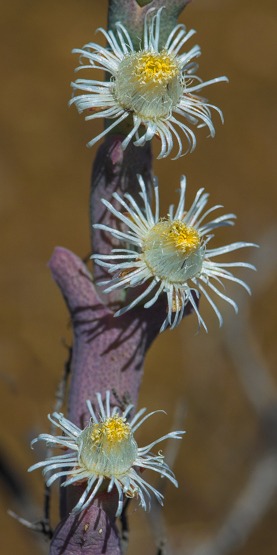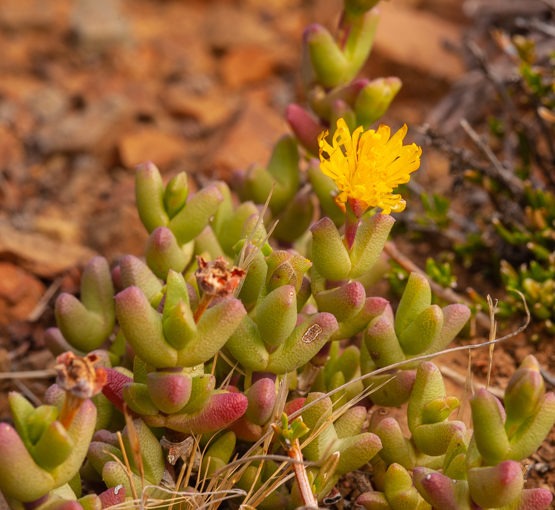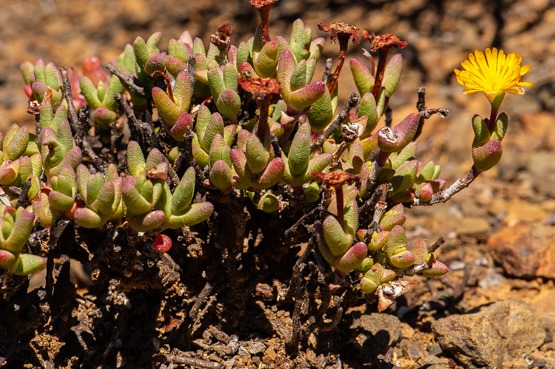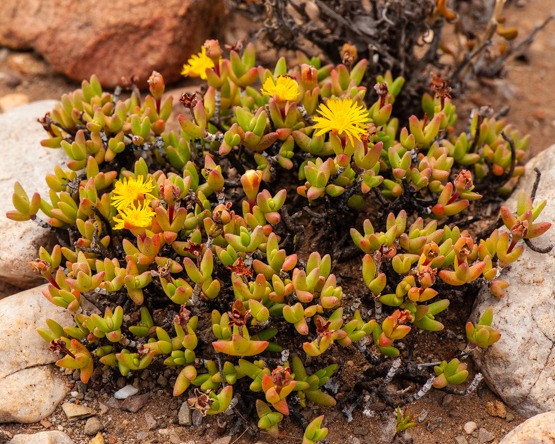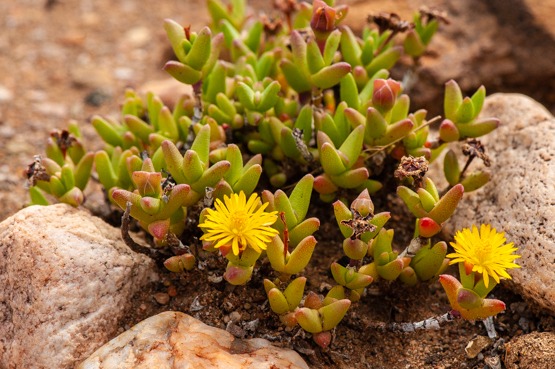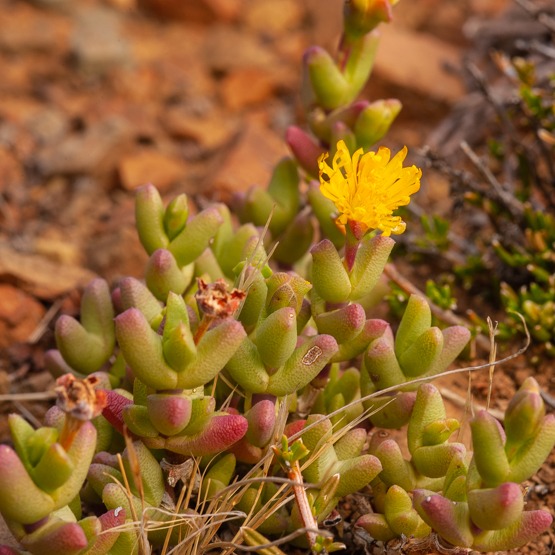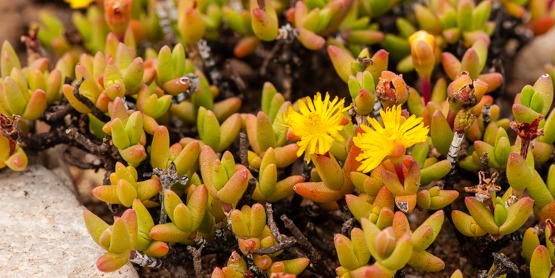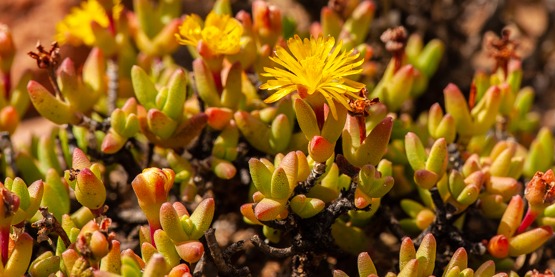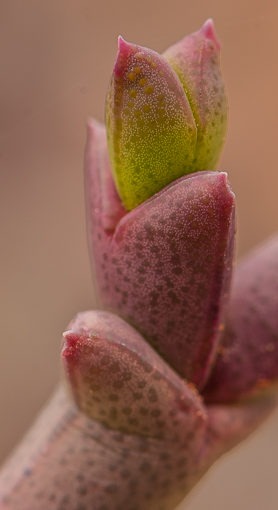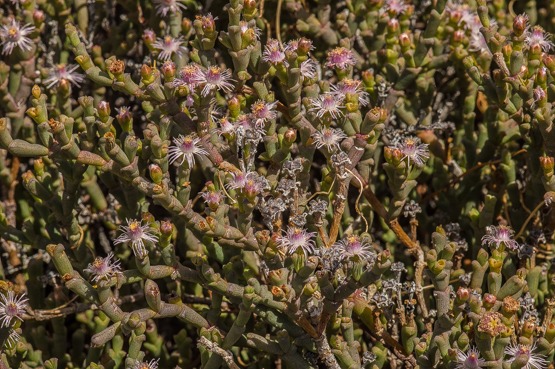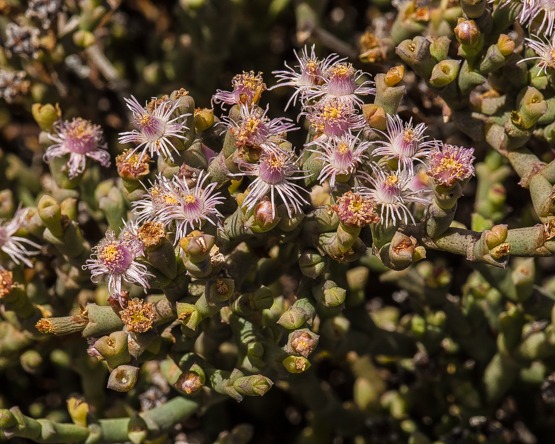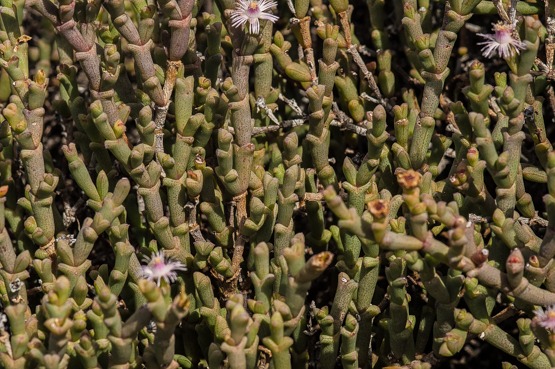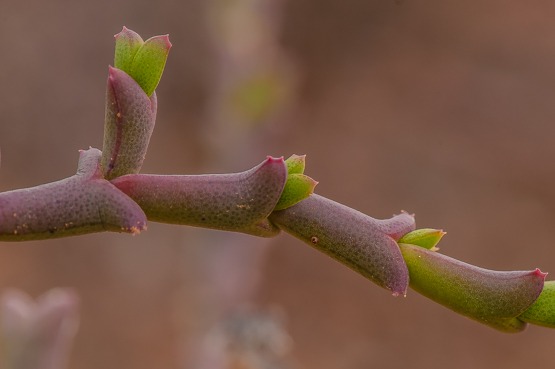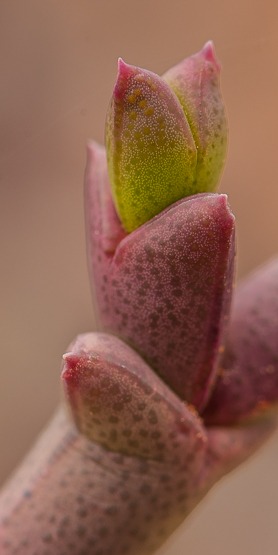Depending on the time of the year, plants belonging to the genus Mitropyllum develop completely different leaf pairs.
During the resting period, the pairs consist of two leaves pressed together in an upright position. This cone-shaped entity is covered in a paper-thin skin, the remains of the preceding leaf pair.
At the beginning of the vegetation period, the leaf pairs start to swell, and the pressure causes the skin to rip apart. After a while, the old leaves are in a more or less horizontal position and in between them the early stage of the mitre-shaped leaves can be seen. In the next phase, the latter start showing their final shape. The original leaves now only bear the remains of the covering membrane. The mitre is still very thin but will fill out considerably in the weeks to come. Gradually the old leaf pair will shrivel and ultimately wither to dry remains. The mitre-shaped leaf has now attained the shape which the genus name refers to.
This phenomenon whereby plants possess leaves of more than one shape or size is called heterophylly.
In Mitrophyllum and related genera this means that the leaves of the hot resting period are smaller than those present at the height of the cool growing season, resulting in less loss of water.
M. grande is a shrublet with a compact centre and short-shoots from which erect long-shoots develop.
It has green to yellowish-green leaves, which in the first pairs are 6-12 x 1.5-3 mm, with tongue-shaped to triangular free parts; the second-pairs are fused for 4/5, forming an oval body 2.5-10 cm long and 1.5-3.5 cm wide.
The thick and soft internodes are 1-1.5 cm in diam.
Yellow or white flowers appear in May-July (Oct.-Dec. in the northern hemisphere) and are up to 4.5 cm in diam.
Restricted to a small area in the Richtersveld, where it occurs on S to SE slopes with quartzitic stones.
In cultivation a strict summer rest should be respected.
